
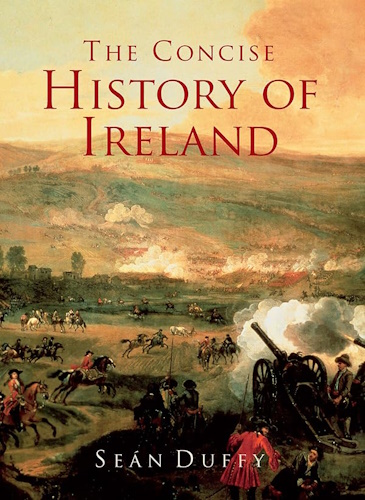
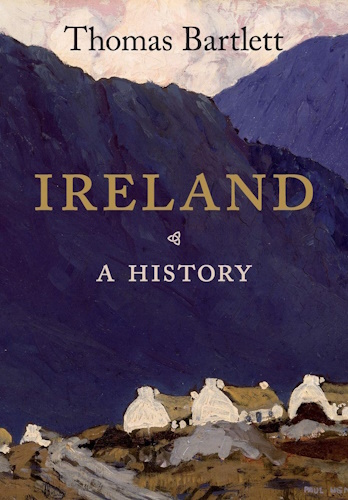
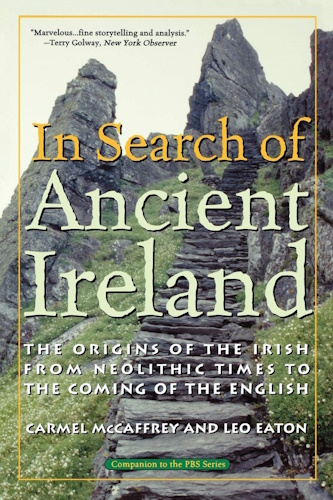


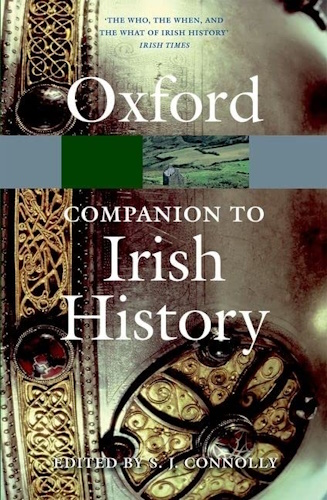
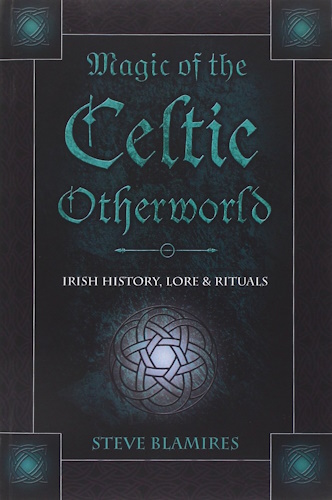


The Goddess Minerva and Symbolism
Appendix XIV to Volume II
of
The Irish Origins of Civilization
by
Michael Tsarion
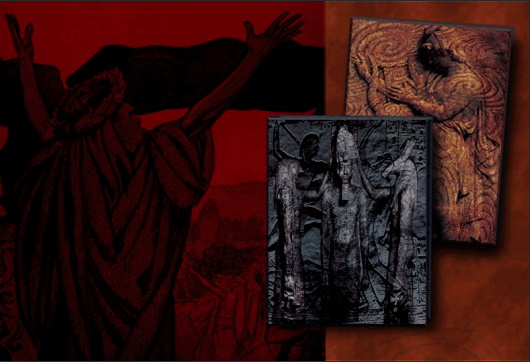
![]()
![]()

Illuminati Degree System
The Illuminati divided their Order and system of initiation into three categories and nine stages. The three stages or grades were:
Nursery Grade
Masonry Grade
Mystery Grade
The Nursery Grade was itself divided into three stages of:
Novice
Minerval, and
Illuminatus Minor
The Masonic Grade was divided into:
Illuminatus Major, and
Illuminatus Dirigens
And within the Mystery Grade were four final stages of:
Presbyter
Principatus Illuminatus
Magus, and
Rex

Dividing schools of mystery according to a threefold schemata was once the habit of the Irish Druids. This is significant since Minerva had undoubtedly been based on the ancient Irish goddess Brigid.
We might note the suggestive fact that the final initiatory stage of the final grade was named "Rex," which means "King." The Illuminati were officially supposed to be anti-monarchy. This term leads us to doubt this assertion. After all, it was an assertion made by the Illuminati elite. Additionally, the esoteric symbolism pertaining to the cult of Minerva was employed during the coronation ceremony of Queen Elizabeth II. So, despite the spin, we might question whether there is truly a difference between the Illuminati and the royal houses of the world? We think not.
Incidentally, thirteen objects of regalia were involved during the Queen's coronation. This is the same number of stars on the flag of the United States of Europe, and that can be found above the eagle's head on the US one dollar bill. As we showed in the Irish Origins of Civilization (Volume Two), thirteen is the number of the Cult of Aton. In Judaism, thirteen denotes the Levites. The Levites were the recipients of the secret and mysterious "Oral Tradition" on Mount Sinai. (Here for more...)

9. The Ampulla (Eagle)
10. The Spurs
11. The Royal Scepter
12. St. Edward's Staff
13. The Scepter with the Dove (or Virge)
2. St. Edward's Crown
3. Imperial Crown of State
4. The Sword of State
5. The Sword of Mercy
6. The Sword of Spiritual Justice
7. The Sword of Temporal Justice
As I point out in the Irish Origins of Civilization, the dove is the emblem of the "Davids," or commanders of the House of Aton. The dove staff is referred to as the "Virge," meaning Virgin. As well as referring to the astrological sign of Virgo, it is yet another occult reference to Minerva.
Who Was Minerva?
...daughter of Jupiter, patroness of health, learning, and wisdom - Bulfinch's Mythology (Glossary)
The Roman goddess Minerva was based on the Greek Athena, who, in turn, was based on earlier Egyptian goddesses such as Isis and Neith. These goddesses were, in turn, based on earlier Western antetypes. They were described as "virginal" and were commonly depicted with fair complexions. They were the mothers of the various sun gods. Most of the Eastern goddesses who turn up in Greek and Roman pantheons were based on the Aryan goddesses Danu, Ana and Brigit. One perfect example is Hera, the supreme goddess of the Greeks. She was based on Eri, goddess of Ireland. (See Chapter Ten, The Disciples of Horus, for more on this subject.)
Minerva was the Roman name of Greek goddess Athena. She was considered to be the virgin goddess of warriors, poetry, medicine, wisdom, commerce, crafts, and the inventor of music - Wikipedia Online Encyclopedia (Entry on Minerva)
In Sais the statue of Athena whom they believe to be Isis, bore the mysterious inscription: "I am all that has been, and is, and shall be, and my robe no mortal has yet uncovered" - Plutarch
From the name Athena we get the city name Athens. Many cities of the world were consecrated to goddesses. The very word city may derive from cteis, meaning "circle" (a reference to the ovum). Athena was a version of Egyptian goddesses Neith and Isis. Neith was depicted as warlike and armored, same as the Grecian version (Pallas Athena). She carried a bow, which doubles up as a womb symbol. (Arrows being phallic symbols.)
So we can see that the Illuminati worshiped pagan goddesses. More importantly, their Minerva was based on Egyptian antetypes. This helps us to link them to the Solar and Stellar Cults of antiquity. If the members of the Order are not biologically related to the sun priests of old, they are certainly ideologically related.
Minerva's Birth
Minerva (Pallas, Athene), the goddess of wisdom, was the offspring of Jupiter, without a mother. She sprang forth from his head completely armed. Her favorite bird was the owl, and the plant sacred to her the olive - Bulfinch's Mythology

In British mythology Minerva was known as Sulis. The bronze head above - of Minerva (or Sulis) - was discovered at the city of Bath that was dedicated to her. The word Sulis means "eye." It also means "opening" or "portal." This latter meaning connotes the female vagina. Some scholars believe the word Sulis comes from the Indo-European Sewel, which meant "sun." Minerva was undoubtedly a version of Baratana, and the the primordial Irish goddess Brigid. Scholars accept that she is closely connected to the Celtic Brigantia. The Christian Saint Brigid of Kildare was also based on the early Irish goddess. (See sources section below for more on these goddesses.) In the movie Avatar, James Cameron's protagonist goes by the name Jake Sully. Is this a subtextual reference to Sulis and Minerva, goddess of the Illuminati?

Minerva the Virgin
Not only was Minerva "immaculately" conceived (being without a mother), but she was also a virginal goddess.
If we examine the name of Athena, we shall, perhaps, be able to paint a picture soberer in colouring but nearer to the facts. The longer form of Athena's name, Athenaia, is simply a feminine adjective, she-of-Athens, the maiden of Athens. The Hymn addresses her as "Pallas, our Lady of Athens." This other name, Pallas, simply means virgin. If the claim of Hera to maidenhood is shadowy, it is not so with Athena. She is maiden through and through, and her temple is rightly called the maiden-sanctuary, the Parthenon - Jane Harrison (Myths of Greece and Rome)
Related Goddesses
The Roman Minerva was a composite deity. She is either identical with, or mythologically related to, the following goddesses of antiquity:
Menrva (Etruscan)
Pallas Athena (Greek)
Neith (Egypt)
Ma'at (Egypt)
Isis (Egypt)
Brigantia (Britain)
Brigid (Ireland)
Baratana (Britain)
Victoria (Roman)
Sulis (Britain)
Saule (Balts)
Nike (Roman)
Vacuna (Roman)
Pallas Athena
The word Pallas means "virginal." Minerva was, therefore, both immaculately conceived and virginal. For the Greeks Pallas Athena symbolized man's reason. She assisted Prometheus in his plot to steal "fire" (knowledge) from the gods to give to men. This is because she sprang from the head of Zeus. Hitherto, men have associated her with the intellect and with reason. In this aspect she is close to the Egyptian goddess Ma'at, and many other "virgin" goddess of Egypt, such as Neith and Isis. In fact, if we examine the names Neith and Athena, we can see faint etymological similarities.

of Greece as Athena or Pallas Athena.
The Shakespeare Controversy
A secondary meaning of Pallas is "shaker." Indeed, Athena was known as the "Spear Shaker." Since her symbol was the spear, some scholars have been lead to connect Athena to the work of William Shakespeare, whom, it is believed, adopted his surname from the goddess in question. Moreover, some researchers believe that the historical personage responsible for the plays and poems of "Shakespeare," was none other than scientific genius Sir Francis Bacon, the editor of the King James Bible and author of the The New Atlantis. Suggestively, Bacon was a member of a Masonic enclave known as the "Knights of the Helmet," named after Minerva, or Pallas Athena. These goddesses - along with Anat and Tanit, etc - may derive from a Persian original known as Anahita.

some occult researchers to be the true author of the
works of Elizabethan playwright William Shakespeare.
A Knight Templar, and major Occultist, Sir Francis Bacon was appointed Solicitor-General and Chief Advisor to the British Crown on June 25th 1607. He conceived the idea of reactivating various secret societies and in 1580 founded the secret Rosicrosse Literary Society and the Lodge of Free and Accepted Speculative Masons. Bacon is said to have introduced the 33 Degree system into Masonry, from the original Templar 9 Degrees - Tony Bushby (Bible Fraud)
For one year he had in his possession the first English translations of the Bible. In fact, he was the first major editor of what would become the King James Bible. He also added secret information into the Bible which was not there before. It will eventually be proved that the whole structure of the Authorized Bible was Francis Bacon’s. He was and ardent student not only of the Bible, but also of early manuscripts - William T. Smedley (Biographer of Bacon)

The Spear
The goddess, Minerva...was a daughter of Jupiter, but she was born in a very strange way, for she sprang out of her father's head, clothed in bright armour, and with a spear in her hand - Reginald C. Couzens (The Stories of the Months and Days)

her spear. This goddess was based on the primordial
Western mother goddesses Sulis, Brigid and Baratana.

of Honor is the highest military decoration awarded by the
United States government. Note the inverted pentacle.
Minerva and the Owl
Minerva was the first deity to build an enclosed house. She is therefore connected with building and architecture. One of her symbols was the butterfly. However, her main symbol was the owl.
Her name has the "mn-" stem, linked with memory. See Greek "Mnemosyne"...memory, remembrance, recollection. The Romans could have confused her foreign name with their word mens meaning "mind" since one of her aspects as goddess pertained not only to war but also to the intellectual. Minerva is the Roman name for Athena the goddess of Wisdom and Virginity. She is also depicted as an owl - Wikipedia Online Encyclopedia (Entry on Minerva)


one of the lesser known symbols of Minerva.
Minerva as War Goddess
In her warlike aspect, Minerva resembles the Egyptian goddess Neith, who was also considered "virginal."
She was also a warlike divinity; but it was defensive war only that she patronized, and she had no sympathy with Mars's savage love of violence and bloodshed. Athens was her chosen seat, her own city, awarded to her as the prize of a contest with Neptune, who also aspired to it - Bulfinch's Mythology
They were at last subdued by thunderbolts, which Minerva invented, and taught Vulcan and his Cyclopes to make for Jupiter - ibid
Chief Symbols of Minerva
House
Spear
Axe (Labrys)
Olive Tree
Owl
Butterfly
Sea Eagle
Serpent
Web
Helmet
Shield or emblem featuring Medusa's Head
Athens and the Serpent
The serpent was mixed up to a considerable extent with the worship of many other of the Grecian deities. The statues, by Phidias, of Minerva, represent her as decorated with this emblem. In ancient medals, as shown by Montfaucon, she sometimes holds a caduceus in her right hand; at other times she has a staff around which a serpent is twisted, and at others, a large serpent appears going in front of her; while she is sometimes seen with her crest composed of a serpent. It is remarkable too, that in the Acropolis at Athens was kept a live serpent who was generally considered the guardian of the place, and Athens was a city specially consecrated to Minerva - (Ophiolatreia)
The goddess Minerva also was often represented with a dragon, or serpent - in statues, medals, and the like. The city of Athens was specially consecrated to her - and in the Acropolis there was kept a live serpent, which was regarded as the guardian of the place- Henry Shepheard (Traditions of Eden)

and serpent. Note the stag, the animal
sacred to the ancient Arya of the West.
Minerva and Law
As the patron of justice, judges, and lawmakers, Minerva closely resembles the Egyptian goddess Ma'at.

It doesn't get more explicit than this.
Minerva and the Creation of Man
Prometheus was one of the Titans, a gigantic race, who inhabited the earth before the creation of man. To him and his brother Epimetheus was committed the office of making man, and providing him and all other animals with the faculties necessary for their preservation. Epimetheus undertook to do this, and Prometheus was to overlook his work, when it was done. Epimetheus accordingly proceeded to bestow upon the different animals the various gifts of courage, strength, swiftness, sagacity; wings to one, claws to another, a shelly covering to a third, etc. But when man came to be provided for, who was to be superior to all other animals, Epimetheus had been so prodigal of his resources that he had nothing left to bestow upon him. In his perplexity he resorted to his brother Prometheus, who, with the aid of Minerva, went up to heaven, and lighted his torch at the chariot of the sun, and brought down fire to man. With this gift man was more than a match for all other animals. It enabled him to make weapons wherewith to subdue them; tools with which to cultivate the earth; to warm his dwelling, so as to be comparatively independent of climate; and finally to introduce the arts and to coin money, the means of trade and commerce - (Bulfinch's Mythology)
The Palladium of Troy
There was in Troy a celebrated statue of Minerva called the Palladium. It was said to have fallen from heaven, and the belief was that the city could not be taken so long as this statue remained within it - (Bulfinch's Mythology)
City of Bath
Bladud built the city of Bath, and dedicated the medicinal waters to Minerva. He was a man of great invention, and practiced the arts of magic - (Bulfinch's Mythology)
Minerva as Weaver
Minerva invented the flute, and played upon it to the delight of all the celestial auditors - ibid
The Queen of Spades
In regular playing decks Minerva is depicted as the Queen of Spades. The suit of Spades represents the warrior (knightly) class. The Hearts or Cups represent the clergy, the Clubs or Wands represent the peasant or worker class, and the diamonds or disks represent the merchant class. In the Tarot the Queen of Spades is equivalent with the Queen of Swords. In the Major Arcana, the card entitled Justice is assigned to the astrological sign of Libra. The esoteric symbolism of this both Libran cards (Queen of Swords and Justice) features prominently during the coronation of the Queen of England, Elizabeth Windsor.


Here - The Coronation of Queen Elizabeth
RECOMMENDED LINKS
http://en.wikipedia.org/wiki/Francis_Bacon
http://en.wikipedia.org/wiki/William_shakespeare
http://en.wikipedia.org/wiki/Shakespeare_authorship_question
http://baconisshakespeare.50megs.com/
http://www.henryneville.com/index.php?option=com_content&task=view&id=30&Itemid=9
http://www.lets-talk.org/shakespeare.htm
http://www.youtube.com/watch?v=FxwYzmyzKNE&feature=player_embedded
http://en.wikipedia.org/wiki/Sulis
http://en.wikipedia.org/wiki/Brigid
http://en.wikipedia.org/wiki/Brigantia
http://en.wikipedia.org/wiki/Brigid_of_Ireland
http://en.wikipedia.org/wiki/Athena
http://en.wikipedia.org/wiki/Neith
http://en.wikipedia.org/wiki/Victoria
http://en.wikipedia.org/wiki/Vacuna
http://www.sacred-texts.com/cla/mgr/index.htm
http://www.geocities.com/athens/acropolis/1896/illum.html
http://freemasonry.bcy.ca/anti-masonry/stauffer.html
http://www.sirbacon.org/gallery/athena.html
http://www.sirbacon.org/knightmp.htm
http://www.sirbacon.org/doddch2martyrdom.htm
http://en.wikipedia.org/wiki/Prometheus
http://blog.wired.com/defense/2008/05/project-minerva.html
http://en.wikipedia.org/wiki/St._Edward%27s_Crown
![]()
![]()
![]()
![]()
Disclaimer:
Some material presented will contain links, quotes, ideologies, etc., the contents of which should be understood to first, in their whole, reflect the views or opinions of their editors, and second, are used in my personal research as "fair use" sources only, and not espousement one way or the other. Researching for 'truth' leads one all over the place...a piece here, a piece there. As a researcher, I hunt, gather and disassemble resources, trying to put all the pieces into a coherent and logical whole. I encourage you to do the same. And please remember, these pages are only my effort to collect all the pieces I can find and see if they properly fit into the 'reality aggregate'.
Personal Position:
I've come to realize that 'truth' boils down to what we 'believe' the facts we've gathered point to. We only 'know' what we've 'experienced' firsthand. Everything else - what we read, what we watch, what we hear - is what someone else's gathered facts point to and 'they' 'believe' is 'truth', so that 'truth' seems to change in direct proportion to newly gathered facts divided by applied plausibility. Though I believe there is 'truth', until someone representing the celestial realm visibly appears and presents the heavenly records of Facts And Lies In The Order They Happened, I can't know for sure exactly what "the whole truth' on any given subject is, and what applies to me applies to everyone. Until then I'll continue to ask, "what does The Urantia Book say on the subject?"
~Gail Bird Allen
![]()
![]()








-
Urantia Book, 44:0.11 - The Celestial Artisans
Never in your long ascendancy will you lose the power to recognize your associates of former existences. Always, as you ascend inward in the scale of life, will you retain the ability to recognize and fraternize with the fellow beings of your previous and lower levels of experience. Each new translation or resurrection will add one more group of spirit beings to your vision range without in the least depriving you of the ability to recognize your friends and fellows of former estates.
-
Princess Bride 1987 Wallace Shawn (Vizzini) and Mandy Patinkin (Inigo Montoya)
Vizzini: HE DIDN'T FALL? INCONCEIVABLE.
Inigo Montoya: You keep using that word. I do not think it means what you think it means. -
Urantia Book, 117:4.14 - The Finite God
And here is mystery: The more closely man approaches God through love, the greater the reality -- actuality -- of that man. The more man withdraws from God, the more nearly he approaches nonreality -- cessation of existence. When man consecrates his will to the doing of the Father's will, when man gives God all that he has, then does God make that man more than he is.
-
Urantia Book, 167:7.4 - The Talk About Angels
"And do you not remember that I said to you once before that, if you had your spiritual eyes anointed, you would then see the heavens opened and behold the angels of God ascending and descending? It is by the ministry of the angels that one world may be kept in touch with other worlds, for have I not repeatedly told you that I have other sheep not of this fold?"
-
Urantia Book, Foreword - 0:12.12 - The Trinities
But we know that there dwells within the human mind a fragment of God, and that there sojourns with the human soul the Spirit of Truth; and we further know that these spirit forces conspire to enable material man to grasp the reality of spiritual values and to comprehend the philosophy of universe meanings. But even more certainly we know that these spirits of the Divine Presence are able to assist man in the spiritual appropriation of all truth contributory to the enhancement of the ever-progressing reality of personal religious experience—God-consciousness.
-
Urantia Book, 1:4.3 - The Mystery Of God
When you are through down here, when your course has been run in temporary form on earth, when your trial trip in the flesh is finished, when the dust that composes the mortal tabernacle "returns to the earth whence it came"; then, it is revealed, the indwelling "Spirit shall return to God who gave it." There sojourns within each moral being of this planet a fragment of God, a part and parcel of divinity. It is not yet yours by right of possession, but it is designedly intended to be one with you if you survive the mortal existence.
-
Urantia Book, 1:4.1 - The Mystery Of God
And the greatest of all the unfathomable mysteries of God is the phenomenon of the divine indwelling of mortal minds. The manner in which the Universal Father sojourns with the creatures of time is the most profound of all universe mysteries; the divine presence in the mind of man is the mystery of mysteries.
-
Urantia Book, 1:4.6 - The Mystery Of God
To every spirit being and to every mortal creature in every sphere and on every world of the universe of universes, the Universal Father reveals all of his gracious and divine self that can be discerned or comprehended by such spirit beings and by such mortal creatures. God is no respecter of persons, either spiritual or material. The divine presence which any child of the universe enjoys at any given moment is limited only by the capacity of such a creature to receive and to discern the spirit actualities of the supermaterial world.
-
Urantia Book, 11:0.1 - The Eternal Isle Of Paradise
Paradise is the eternal center of the universe of universes and the abiding place of the Universal Father, the Eternal Son, the Infinite Spirit, and their divine co-ordinates and associates. This central Isle is the most gigantic organized body of cosmic reality in all the master universe. Paradise is a material sphere as well as a spiritual abode. All of the intelligent creation of the Universal Father is domiciled on material abodes; hence must the absolute controlling center also be material, literal. And again it should be reiterated that spirit things and spiritual beings are real.
-
Urantia Book, 50:6.4 - Planetary Culture
Culture presupposes quality of mind; culture cannot be enhanced unless mind is elevated. Superior intellect will seek a noble culture and find some way to attain such a goal. Inferior minds will spurn the highest culture even when presented to them ready-made.
-
Urantia Book, 54:1.6 - True And False Liberty
True liberty is the associate of genuine self-respect; false liberty is the consort of self-admiration. True liberty is the fruit of self-control; false liberty, the assumption of self-assertion. Self-control leads to altruistic service; self-admiration tends towards the exploitation of others for the selfish aggrandizement of such a mistaken individual as is willing to sacrifice righteous attainment for the sake of possessing unjust power over his fellow beings.
-
Urantia Book, 54:1.9 - True And False Liberty
How dare the self-willed creature encroach upon the rights of his fellows in the name of personal liberty when the Supreme Rulers of the universe stand back in merciful respect for these prerogatives of will and potentials of personality! No being, in the exercise of his supposed personal liberty, has a right to deprive any other being of those privileges of existence conferred by the Creators and duly respected by all their loyal associates, subordinates, and subjects.
-
Urantia Book, 54:1.8 - True And False Liberty
There is no error greater than that species of self-deception which leads intelligent beings to crave the exercise of power over other beings for the purpose of depriving these persons of their natural liberties. The golden rule of human fairness cries out against all such fraud, unfairness, selfishness, and unrighteousness.




